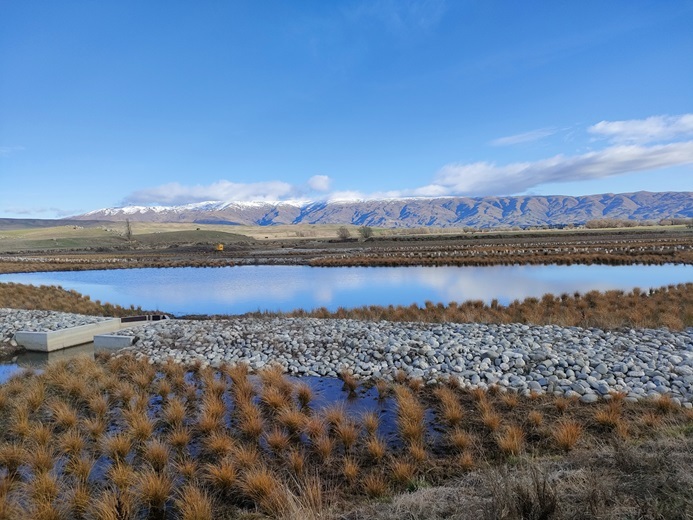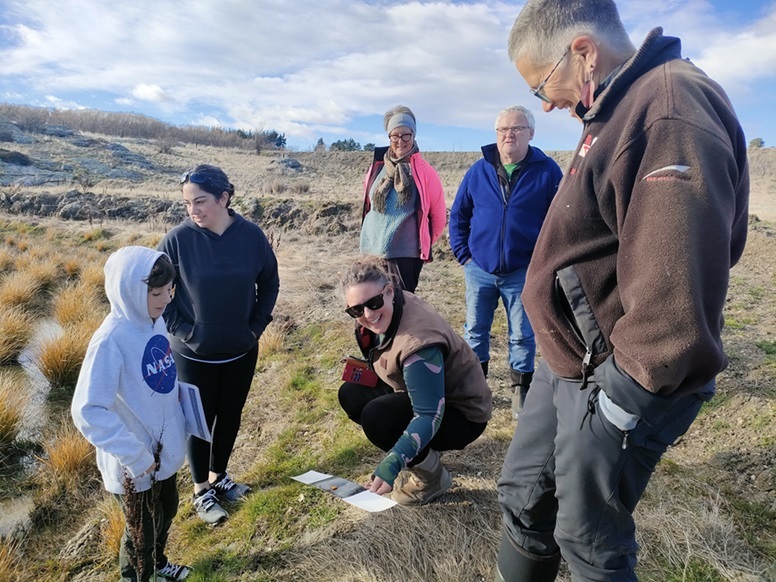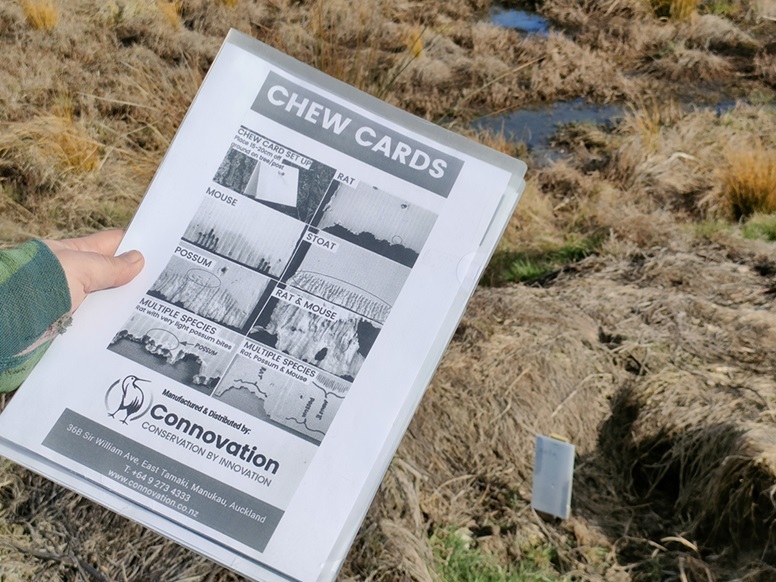Predator monitoring protects Thomsons Wetland birdlife
Alexia Anderson
01 September 2024, 5:45 PM
 A group of volunteers doing their bit to help protect birdlife at Thomsons Wetland are Jack Hore (11, front) and (from left) Kim Hore, Duncan Holland, Joana Perez, Raf Wyatt, Vickie Taylor and Ken Taylor. PHOTO: The Central App
A group of volunteers doing their bit to help protect birdlife at Thomsons Wetland are Jack Hore (11, front) and (from left) Kim Hore, Duncan Holland, Joana Perez, Raf Wyatt, Vickie Taylor and Ken Taylor. PHOTO: The Central AppEfforts are underway to safeguard birdlife at Thomsons Wetland ahead of the arrival of potential predators to the area.
The wetland, on the outskirts of the Omakau township, attracts a wide range of native and endangered birds.
To keep them protected from predators including stoats, ferrets, hedgehogs and possums, monitoring stations have been placed around the wetland, which a group of volunteers are regularly monitoring.

The wetland is not accessible to the public but can be viewed from the Otago Central Rail Trail. PHOTO: The Central App
A group of seven ventured to the site on Friday morning to gauge what predators were already moving into the area, ahead of the warmer months.
To do that, volunteer Kim Hore used a guide sheet to determine what rodents had nibbled away at peanut butter infused boards dotted around the wetland.
Boards slotted inside small tunnels were also used to help the group determine what footprints had been left behind.
The group’s latest investigation found signs of mice and rats in the area.
Swans and their cygnets grace the wetland, among a range of other native and endangered birds. VIDEO: The Central App
However, there appeared to be limited activity, Kim said.
“There’s just not that much here yet, which is good news.
“I think we are ahead of it.”
She said while rats could move in, in big numbers, stoats and ferrets could be the most damaging.

The group monitors one of the stations during a walk around the wetland on Friday.

A guide helps the volunteers determine what predators have been in the area, based on chew marks left on a card, pictured in the background.
Trapping stations will soon be installed.
As the group moved around the wetland on Friday, two resident swans with their four small cygnets appeared, a promising sign that predators were being kept at bay.
Kim said the cygnets first appeared about two weeks ago, so was pleased to see all four were still alive and well.
“We can see the wildlife coming in, so we are just trying to protect them.”
The Thomsons Wetland is the work of the Manuherekia Catchment Group, which started out as a way to find solutions to protect water quantity and quality.
Weather permitting, the next event for the Thomsons Wetland is a planting day, taking place on Sunday, September 29, from 10am.
Register your interest at [email protected] or visit the Manuherekia Catchment Group’s website to learn more about the group, or to read its latest newsletter.
PHOTOS/VIDEO: The Central App

NEWS
PUBLIC NOTICES
JOBS







